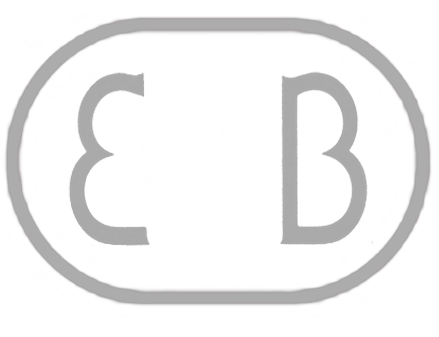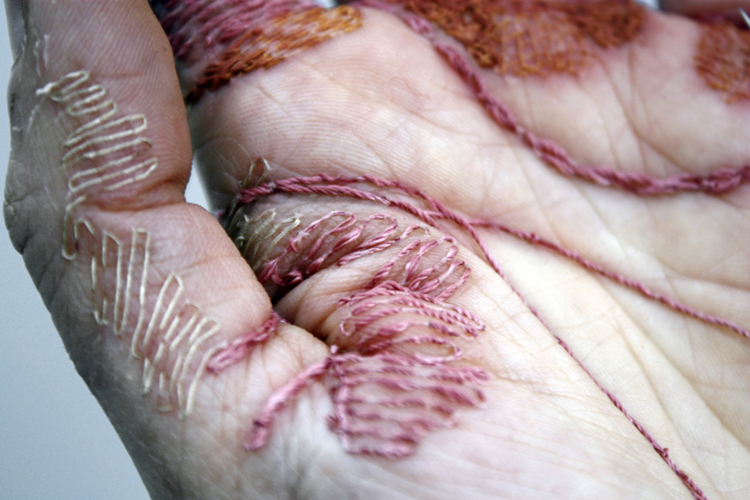
A Woman’s Work Is Never Done
2012/ 2014,
Flesh, thread, digital print.
A series of photographic works titled A Woman's Work is Never Done. Using my own hand as a base material, I considered it a canvas upon which I stitched into the top layer of skin using thread to create the appearance of an incredibly work worn hand. By using the technique of embroidery, traditionally employed to represent femininity and applying it to the expression of its opposite, I hoped to challenge the pre-conceived notion that 'women's work' is light and easy. Aiming to represent the effects of hard work arising from employment in low paid 'ancillary' jobs, such as cleaning, caring and catering, all traditionally considered to be 'women's work'. Such work is invisible in the larger society, with 'A woman's work' I aimed to represent it.
Commissioned by KODE Art Museums of Bergen and Oslo, to produce a video of the work, to be screened at their exhibition Nalen's Oye, showcasing a collection of artists who employ embroidery as their medium in contemporary art.
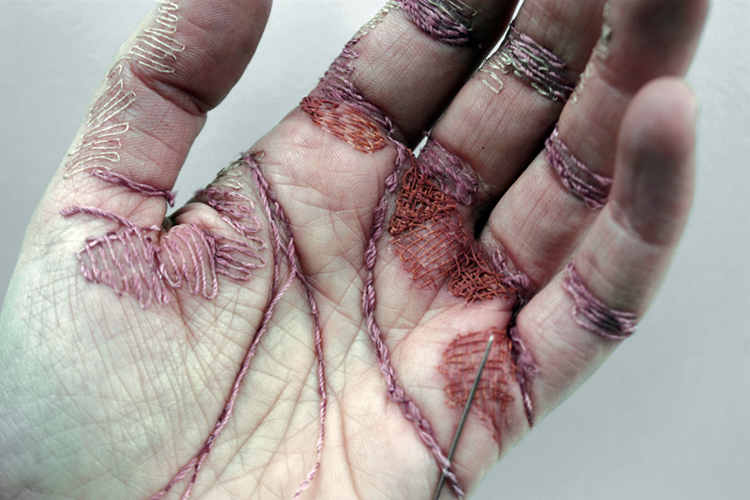
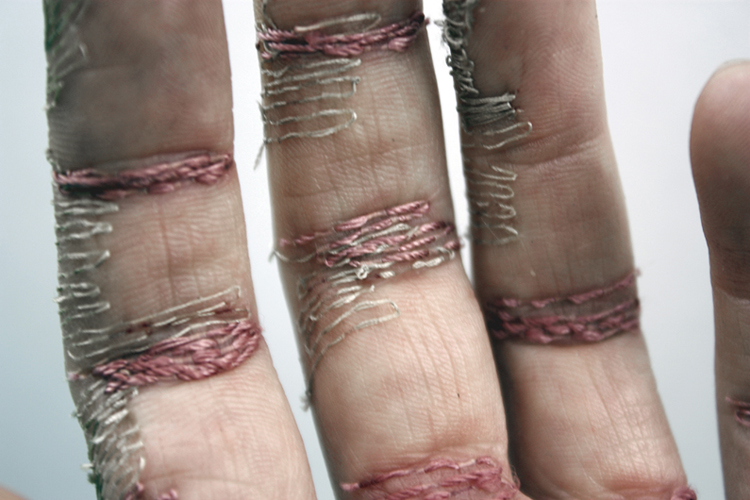
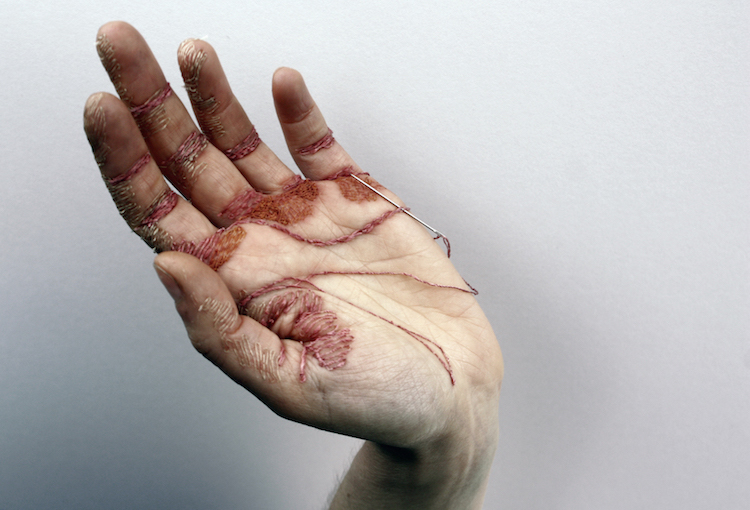
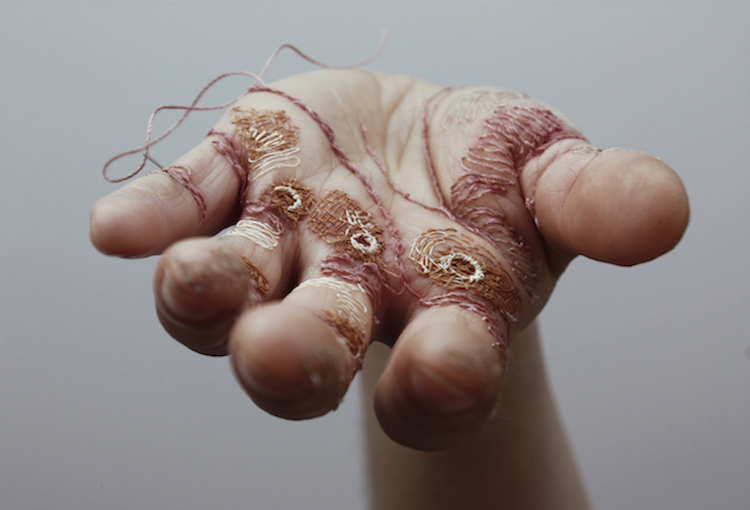





A Woman’s Work Is Never Done
2012/ 2014,
Flesh, thread, digital print.
A series of photographic works titled A Woman's Work is Never Done. Using my own hand as a base material, I considered it a canvas upon which I stitched into the top layer of skin using thread to create the appearance of an incredibly work worn hand. By using the technique of embroidery, traditionally employed to represent femininity and applying it to the expression of its opposite, I hoped to challenge the pre-conceived notion that 'women's work' is light and easy. Aiming to represent the effects of hard work arising from employment in low paid 'ancillary' jobs, such as cleaning, caring and catering, all traditionally considered to be 'women's work'. Such work is invisible in the larger society, with 'A woman's work' I aimed to represent it.
Commissioned by KODE Art Museums of Bergen and Oslo, to produce a video of the work, to be screened at their exhibition Nalen's Oye, showcasing a collection of artists who employ embroidery as their medium in contemporary art.
